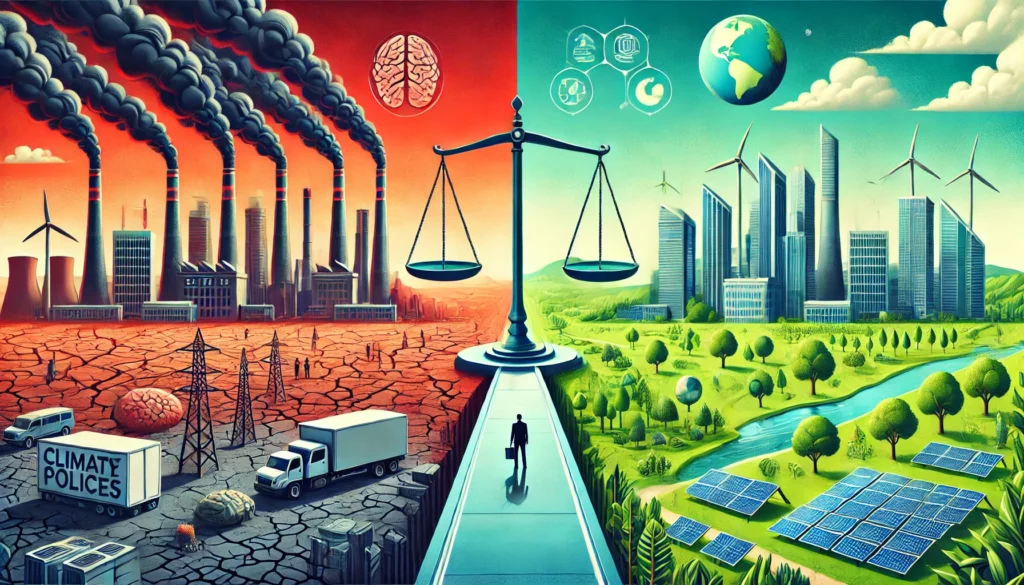Climate change—two words that make you either want to hug a tree or bury your head in the sand. While the science is pretty clear (spoiler: it’s bad), the debate on how to tackle it is anything but straightforward. Governments worldwide are rolling out climate change policies, but not everyone’s on board. Are they saving the planet, wrecking economies, or a weird mix of both? Let’s unpack it.
Why Bother With Climate Change Policies Anyway?
First, the obvious: climate change is real, and it’s not waiting for us to get our act together. Global warming is heating things up (literally), causing extreme weather, melting ice caps, and threatening ecosystems. The biggest culprit? Carbon emissions from burning fossil fuels, deforestation, and industrial processes.
Governments know that if they don’t take action, the consequences will be catastrophic—not just environmentally but economically too. Imagine dealing with constant floods, heatwaves, and agricultural collapse. Sounds fun, right? That’s why climate change policies are a thing.
Carbon Emissions: The Villain of the Story
One of the biggest targets of climate change policies is carbon emissions. Reducing them is like trying to lose weight while living in a bakery—it’s tough but necessary. Countries are setting targets to lower emissions, like aiming for net-zero by 2050. The idea is to balance the amount of greenhouse gases emitted with the amount removed from the atmosphere.
How do they plan to do it? Think renewable energy, electric vehicles, carbon taxes, and banning single-use plastics. Some countries are even paying people to plant trees. It’s all about cutting down carbon footprints while boosting sustainability.
Government Action: The Good, the Bad, and the Confusing
Government action on climate change varies wildly. Some countries are all in—think of the European Union with its Green Deal, aiming to make the EU climate-neutral by 2050. Then you have countries that are more hesitant, balancing environmental concerns with economic realities.
Take carbon pricing, for example. The logic is simple: make pollution expensive, and companies will pollute less. Carbon taxes or cap-and-trade systems put a price on emissions, encouraging businesses to clean up their acts. It works in theory, but in practice? Companies sometimes just pass the cost to consumers or move their operations to countries with laxer rules. Oops.
Then there are the subsidies for green technologies. Governments pump money into solar, wind, and electric vehicle infrastructure, hoping that innovation will make these options cheaper and more accessible. Sounds great until you realize that some fossil fuel industries still get hefty subsidies too. Mixed signals much?
Does It Actually Work?
The million-dollar question: Are these policies making a difference? Yes and no. Take the Paris Agreement—countries agreed to limit global warming to well below 2°C. Sounds promising, but not every country is hitting its targets. Plus, some major players (looking at you, big polluters) are lagging behind.
The good news? Renewable energy is booming. Solar and wind are becoming more affordable, and electric cars are finally cool. Countries like Denmark and Costa Rica are proof that clean energy policies can work. Meanwhile, some places struggle to balance reducing emissions with keeping economies afloat—especially those relying on fossil fuel exports.
The Economic Tightrope
Let’s be real—climate change policies aren’t just about saving polar bears. They also mess with jobs, industries, and even national economies. Take the coal industry, for example. Shutting down coal plants is great for the environment but devastating for communities dependent on coal mining.
This is where “just transition” policies come in—helping workers move from fossil fuel industries to greener jobs. Training programs, financial support, and community investment are crucial, but it’s easier said than done. No one wants to be left behind in the green rush.
And then there’s the cost to consumers. Higher fuel prices, taxes on plastic, and the cost of upgrading infrastructure can hit ordinary people hard. The challenge is to make policies effective without making them a burden. Balance, as always, is key.
The Global Puzzle
Climate change doesn’t respect borders, so policies can’t just be local. International cooperation is a must, but it’s complicated. Wealthier countries push for aggressive policies, while developing nations argue they’re being asked to pay for a crisis they didn’t cause. Fair point.
That’s why climate finance exists—rich nations pledging billions to help poorer countries adapt. Unfortunately, the cash flow isn’t as generous as promised. Without global commitment, individual efforts can feel like tossing a bucket of water on a forest fire.
The Real Impact: More Than Just Numbers
Climate change policies aren’t just about stats and targets—they’re about changing how we live. From how we commute to how we power our homes, these policies are reshaping our routines. Some people embrace it, while others feel it’s an inconvenience at best or a financial burden at worst.
But here’s the thing: doing nothing is not an option. As policies push us toward greener practices, resistance is normal, but adaptation is crucial. Governments can’t just set targets—they need to bring people along for the ride. That means clear communication, fair transitions, and ensuring that no one gets left out in the cold (or the heat, as it may be).
Final Thoughts: Progress Over Perfection
Climate change policies are messy, imperfect, and sometimes downright controversial. But they’re also necessary. The real impact isn’t just about lowering emissions; it’s about creating a sustainable future without wrecking today’s economy.
Whether we like it or not, the world is changing. The question isn’t whether to act, but how to make those actions fair and effective. Governments have their work cut out for them, but so do we. After all, saving the planet is a group project—one where no one can afford to slack off.


